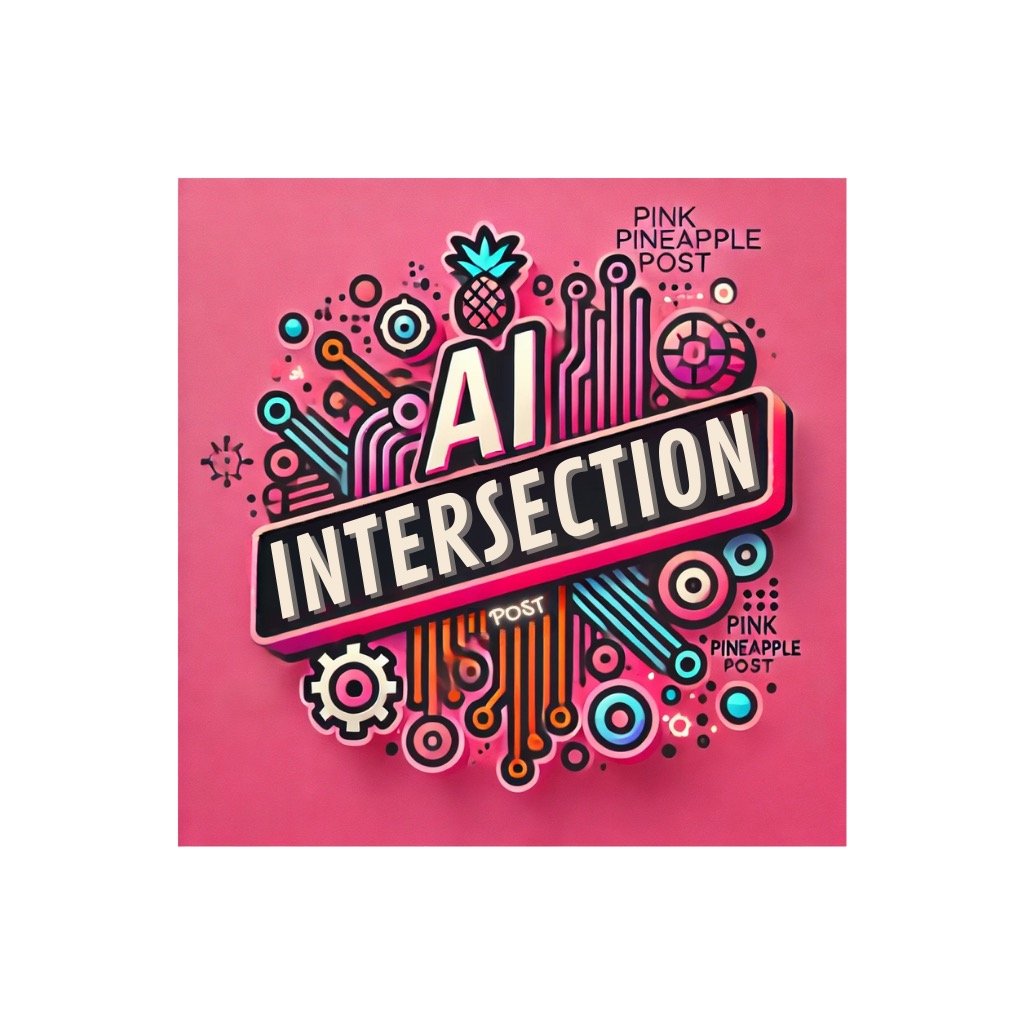What AI Did in My Meeting, Test Your Vocab & Truly Great Brand-Created Content from around the Web
Welcome, readers! (Did you know the pineapple is a symbol of hospitality? True story. Just… ummm… don’t turn it upside down. Unless, you know, you want to.) It’s time for issue #2 of Pink Pineapple Post, which offers smart tips to help you create the tastiest-possible content your audience will want to devour. Today’s newsletter features a very sexy word wars, an inside look at what happened when I invited AI to a meeting, and some of the coolest brand-created content out there.
Constraint vs. Restraint
Here’s What Happened When AI Crashed My Meeting
Recently, I had an amazing conversation with two of my favorite “thinking-out-loud” partners, Elisabeth Andrews and Dr. Kevin Berkopes. Elisabeth asked if we wanted to invite her AI assistant, named Elisabot, to the meeting. We’d played with the tool before, and found the auto-generated summary extremely useful, so it was an easy yes.
Unexpectedly, the output was far more than just a summary. The AI wrote (the shell of) an interesting, engaging article, highlighting the common themes of our conversation and incorporating cogent quotes — no human note-taking required.
Although I did edit it significantly, I appreciated the way the AI pulled together the high-level themes and spit out a decent outline and structure. I changed it to be in the first-person from my perspective, and also shifted some points around that didn’t really make sense with the AI’s organization. I also added more context in a few areas, which required some research for reference.
Interestingly, what was most difficult in the end was editing it to be in my writerly voice. I’ve encountered this problem before working with freelance contributors. Sometimes a writer submits a piece that’s perfectly well written and fine as is, but it’s not quite on brand. Sometimes that’s surprisingly tricky to recognize, and more slippery still to “fix.”
Following is my edited version of what the AI automatically produced. Does it sound like me?
Rethinking Systems: Innovative Approaches to Education, Policy, and Social Change
What happens when a writer, a marketer and a PhD in mathematics put their heads together? The flaws and fissures in academia, the corporate world and government policy are illuminated — and fresh thinking emerges for potential new ways forward.
When I recently met with two super-smart friends of mine, education innovator Dr. Kevin Berkopes and writer-academic consultant Elisabeth Andrews, we didn’t have a set agenda, but we did end up solving most of the world’s problems. I mean, I’m mostly just kidding but we did hit upon the need for radical rethinking of traditional systems, interdisciplinary approaches, and a deeper understanding of human behavior to drive meaningful change. In short, there are many things that just aren’t working well right now. Making a difference will certainly require a mighty change in the status quo.
1. Traditional Systems Are Not Getting Sh*t Done in This Modern World
Although we all operate within distinct professional spheres, we quickly realized that many existing structures in education, government, and business are outdated and ineffective in addressing contemporary issues. For instance, Kevin runs MathTrack Institute (MTI), which issues apprenticeship-based degrees and credentials for teaching math. This particular approach is calculated to help solve the teacher shortage crisis, but it’s simultaneously an employment solution.
Specifically, there are over 4 million teachers working across the US, which represents 2.5% of the working population in our country. In contrast, Wal-Mart employs 2.1 million workers, and Amazon 1.52 million. And yet, when working to secure grants and other government sources of funding to pay for these degrees, the structure is siloed so that funding has to come either from education budgets or from employment initiatives.
This runs counter to the science of “nudging” (yep, that’s a real thing), wherein one of the key tenets is to design solutions that “accomplish three or four things with the same effort,” as Kevin describes it. In part, that’s why the MTI degrees are so attractive. Students get their training while getting paid, and administrators fill vacant spots now without impacting their budgets. Plus, new employees get multiple layers of support. If you’re counting, that’s five things bundled into one course of action.
So why aren’t there more solutions like this as our education systems continue to falter? One reason is they often challenge traditional educational models, which Kevin argues are stuck in outdated thinking. Do you know where credit hours come from? Kevin explains it this way: “A Carnegie unit is a proportion that was set in the early 1900s for how a credit hour has a certain amount of out of class time and then class seat time. And then every university built their credit hour accreditation and degree paths based on credit hours.”
Today, all of our academic institutions are built on this arcane framework when many students never even have literal “seat time.” But to change this embedded system would require a Herculean effort that most institutions just have no interest (and perhaps no incentive) to tackle.
2. Systems-Level Thinking Shakes Things Up, Creating Impactful Action
Inevitably, our talk circled around to the need to break down silos and approach problems from multiple angles. One example of what this can look like is the idea of “braided funding,” which combines resources from disparate places. For MTI, this is a mix of funding across different government departments (jobs and education), as well as corporate funding (employers are bemoaning the lack of qualified candidates) and non-profits.
Elisabeth connected this to her own work. “We were looking at the use case of Wales and how they were trying to get free school lunches and had to involve no fewer than six ministries, because food is not a way that we organize, even though food is a basic need,” she said.
This systems-level thinking extends to childcare as well. Recently, my preschooler’s early learning center at Northern Kentucky University (NKU) unexpectedly closed. Thankfully, it’s reopened under a new organization in partnership with NKU, but it led me to do some deep thinking about the systemic problems facing early learning in our country. A pay-to-play model where parents foot 100% of the tuition bill and a single company pays its workers a living wage and provides excellent care is not working.
Much better is that “braided funding” model, currently employed by many on-campus early learning centers. These centers operate as part of education schools, receive grant funding, conduct research and offer hands-on learning opportunities to college students and professors. More on this here.
3. Drive Change by Understanding What Drives Actual, Real People
Throughout our discussion, we kept coming back to the importance of aligning solutions with human motivations and tendencies. Back to that “nudge research,” which Kevin explains further this way: “Human beings always look for redundancy and effort. So if you can accomplish two things with the same effort, then you're going to be more likely to do it.”
This understanding of human behavior is crucial in designing effective interventions. Of course, I immediately saw the implications for using “micro nudges” within marketing journeys. The idea of helping customers accomplish multiple to-dos in a single action could be a game-changer.
Elisabeth works as a consultant with academics who are writing grants to fund their work, and she sees the potential of providing this framework to her clients: “I have not labeled it this way, but what is true is that I'm not only helping them get grants, I’m helping them get publications, I’m helping them write policy recommendations.”
It’s a new way of thinking that brings a fresh dimension to the customer-centric approach. How can we “bundle” multiple customer actions/requirements into a single workstream or process?
Kevin frames this as outlining the job to be done. “You have to backwards map from the job to be done,” he said. By rethinking traditional systems, embracing interdisciplinary approaches, and deeply understanding human behavior, we can develop more effective solutions to complex modern problems.
For contrast, here’s the auto-generated AI output that inspired this idea:
These Brands Are Making Content that Rocks
Yes, it is possible for brands and businesses to go beyond sales-centered marketing to create valuable, authentic content with journalistic integrity. Here’s a few of my faves doing it oh-so-well.
Oatly
I’m still into cow’s milk, but I’d cheat on a heifer with creamy Oatly. Friends, their blog Things We Do truly embodies their brand and it’ll make you laugh. Seriously, try not to chuckle when you visit their second site devoted solely to brand haters, FckOatly.com.
The Infatuation
Need to know the straight skinny on where to eat in a gazillion cities around the globe? The Infatuation (which is owned by JP Morgan Chase and actually doesn’t feel gross that it is) offers a feast of unbiased content designed to make your mouth water—and swipe your card at a tasty new destination. I totally enjoyed snacking on the Chris Pine story.
Onward
Onward is a surprisingly well done magazine from Charles Schwab. They mail a print copy to me at home (great way to get on my good side since I’m a sucker for magazines and catalogs), and the topics and writing are helpful and interesting (ie: not horrifyingly boring).








